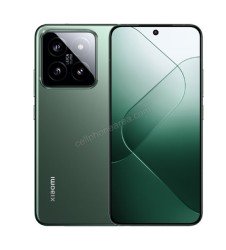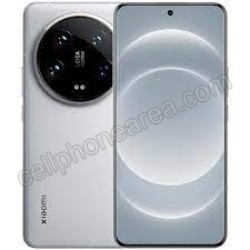Xiaomi 14 Pro vs Xiaomi 14 Ultra Comparison
Here, we compared two smartphones: the Xiaomi 14 Pro and the Xiaomi 14 Ultra. The Xiaomi 14 Pro is a 6.73 inches, 108.9 cm2 (~89.6% screen-to-body ratio) phone with a Qualcomm SM8650-AB Snapdragon 8 Gen 3 (4 nm) Processor, Announced on 1 Nov, 2023. The Xiaomi 14 Ultra is a 6.73 inches, 108.9 cm2 (~89.6% screen-to-body ratio) phone with a Qualcomm SM8650-AB Snapdragon 8 Gen 3 (4 nm) Processor, Announced on 22 Feb, 2024. This page has information about both phones, including Price, Camera, Display, Performance, RAM, Storage, Battery, Operating System, Network Connectivity, Multimedia, Color, and more.
Xiaomi 14 Pro spotlights
Xiaomi 14 Pro released in 2023, November 01. Firstly, Its dimensional measure is 161.4 x 75.3 x 8.5 mm and the weight is 223 g or 230 g (7.87 oz). Secondly, the display of Xiaomi 14 Pro is a 6.73 inches, 108.9 cm2 (~89.6% screen-to-body ratio) LTPO AMOLED, 68B colors, 120Hz, Dolby Vision, HDR10+, 3000 nits (peak) with 1440 x 3200 pixels, 20:9 ratio (~522 ppi density) resolution. It's built with Glass front, aluminum frame or titanium frame, glass back. Thirdly and most importantly, it is powered by the Qualcomm SM8650-AB Snapdragon 8 Gen 3 (4 nm) and running with Android 14, HyperOS. Moreover, it has up to an Octa-core (1x3.3 GHz Cortex-X4 & 3x3.2 GHz Cortex-A720 & 2x3.0 GHz Cortex-A720 & 2x2.3 GHz Cortex-A520) CPU with Adreno 750 GPU.
Xiaomi 14 Pro phone has a Triple-camera setup on the back. This formation consists of a 50 MP, f/1.4-f/4.0, 23mm (wide), 1/1.31", 1.2µm, dual pixel PDAF, Laser AF, OIS 50 MP, f/2.0, 75mm (telephoto), PDAF (10cm - ∞), OIS, 3.2x optical zoom 50 MP, f/2.2, 14mm, 115˚ (ultrawide), AF camera. It has a 32 MP, (wide) selfie camera inside the notch of the display. The video recording capability is 8K@24fps (HDR), 4K@24/30/60fps (HDR10+, 10-bit Dolby Vision HDR, 10-bit LOG), 1080p@30/60/120/240/960fps, 720p@1920fps, gyro-EIS. According to its RAM and ROM, it has 256GB 12GB RAM, 512GB 16GB RAM, 1TB 16GB RAM variants. It has a Nano-SIM and eSIM or Dual SIM (Nano-SIM, dual stand-by) and also supports - Fingerprint (under display, optical), accelerometer, proximity, gyro, compass, barometer, color spectrum. Two-way satellite communication (Titanium version only) sensors.
Xiaomi 14 Ultra spotlights
Xiaomi 14 Ultra released in 2024, February 22. Firstly, Its dimensional measure is 161.4 x 75.3 x 9.2 mm (6.35 x 2.96 x 0.36 in) and the weight is 219.8 / 224.4 / 229.5 g (7.76 oz). Secondly, the display of Xiaomi 14 Ultra is a 6.73 inches, 108.9 cm2 (~89.6% screen-to-body ratio) LTPO AMOLED, 68B colors, 120Hz, Dolby Vision, HDR10+, 1000 nits (typ), 3000 nits (peak) with 1440 x 3200 pixels, 20:9 ratio (~522 ppi density) resolution. It's built with Glass front (Shield Glass), glass or eco leather back, titanium (grade 5) or aluminum alloy frame. Thirdly and most importantly, it is powered by the Qualcomm SM8650-AB Snapdragon 8 Gen 3 (4 nm) and running with Android 14, HyperOS. Moreover, it has up to an Octa-core (1x3.3 GHz Cortex-X4 & 3x3.2 GHz Cortex-A720 & 2x3.0 GHz Cortex-A720 & 2x2.3 GHz Cortex-A520) CPU with Adreno 750 GPU.
Xiaomi 14 Ultra phone has a Quad-camera setup on the back. This formation consists of a 50 MP, f/1.6-f/4.0, 23mm (wide), 1.0"-type, 1.6µm, multi-directional PDAF, Laser AF, OIS 50 MP, f/1.8, 75mm (telephoto), 1/2.51", 0.7µm, dual pixel PDAF (10cm - ∞), OIS, 3.2x optical zoom 50 MP, f/2.5, 120mm (periscope telephoto), 1/2.51", 0.7µm, dual pixel PDAF (30cm - ∞), OIS, 5x optical zoom 50 MP, f/1.8, 12mm, 122˚ (ultrawide), 1/2.51", 0.7µm, dual pixel PDAF TOF 3D, (depth) camera. It has a 32 MP, f/2.0, 22mm (wide), 1/3.14", 0.7µm selfie camera inside the notch of the display. The video recording capability is 8K@24/30fps, 4K@24/30/60/120fps, 1080p@30/60/120/240/480/960/1920fps, gyro-EIS, Dolby Vision HDR 10-bit rec. (4K@60fps, 1080p). According to its RAM and ROM, it has 256GB 12GB RAM, 512GB 16GB RAM, 1TB 16GB RAM variants. It has a Dual SIM (Nano-SIM, dual stand-by) and also supports - Fingerprint (under display, optical), accelerometer, proximity, gyro, compass, color spectrum, barometer sensors.


